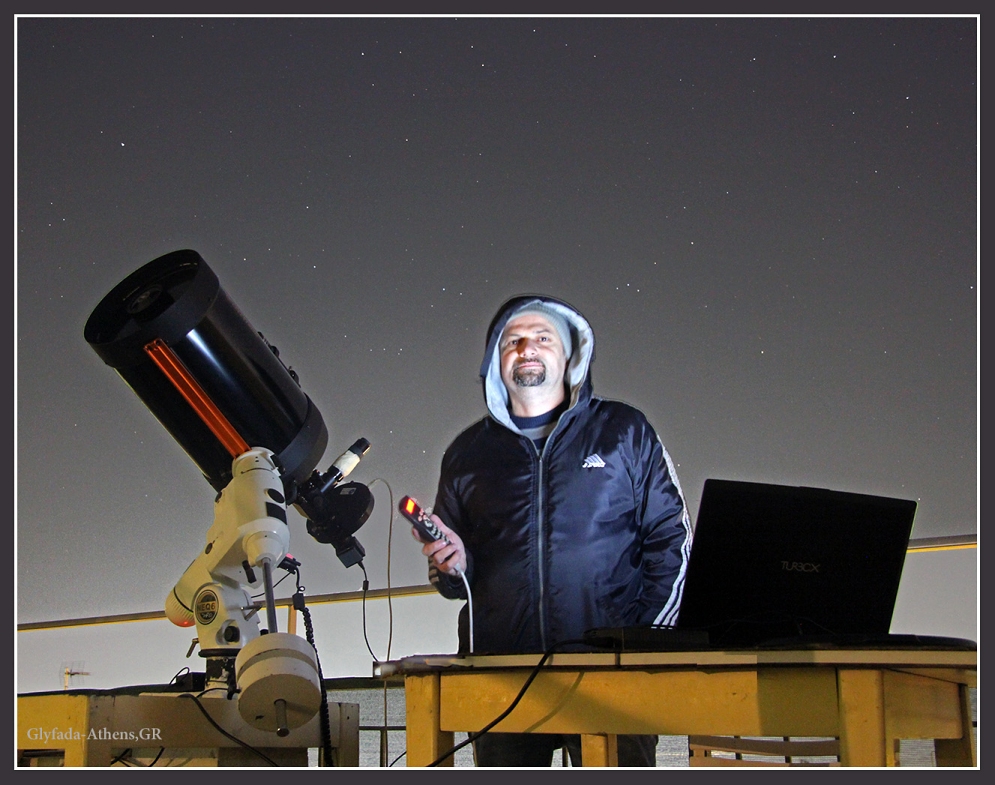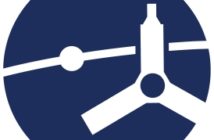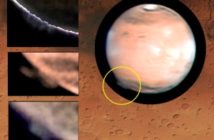Planetary astronomy is not only a science or imaging techniques. This is people as well! Starting a new kind of articles on the blog, I’m interviewing Manos Kardasis, from Greece…
Click here to go to Manos’astronomical homepage
Hi Manos, could you tell us briefly about you, where you observe and what you are doing in astronomy?
I was born and grew up in Athens, where I still live with my wife and our two children. I work as an electronic engineer. My greatest passion is Astronomy! As a young boy the view of the night sky captivated my senses, and made me dreaming and wanting to study the unknown. I owned my first telescope 15 years ago and used to observe every object in the sky, but my first serious observations were made on variable stars.
Gradually, planets, comets and meteors, in other words the near-Universe, fascinated me more and more since I could observe and explore their fast evolving features from my backyard. I’ve made thousands of planetary observations, and many experiments on new imaging and processing methods. Moreover, I contribute to numerous events to promote Astronomy to the wide public.
In 2003, along with other fellow amateur astronomers we established the Hellenic Amateur Astronomy Association (HAAA). One of the main goals of HAAA is to spread the mindset and the methods of observational amateur astronomy to the Greek community. I have been a member of the Association’s Board ever since and also the president of the Association from April 2010 until April 2012. Furthermore, I have expanded my activities beyond the Greek borders by taking part in European and international 
I continuously try to observe, collaborate with amateurs and professionals, and spread the beauty of Astronomy to the public. I strongly believe that individuals and clubs that pursue a continuous and well-organized program of observations should be the paradigm of any society.
You are indeed well involved yourself in such a goal in planetary astronomy. So much that you were nominated for a special prize last year…
Last year I was nominated for the Europlanet prize of 2013 by the professional astronomer Padma Yanamandra-Fischer, and supported by the astronomers E. Chatzichristou, A. Christou and J. Rogers. It was a great honour for me and I thank them all from the bottom of my heart. I didn’t won the prize but the Europlanet Outreach Steering Committee (OSC) has decided to recognise my efforts with a jury special recognition:
“The OSC was extremely impressed by the range of activities undertaken by Emmanuel Kardasis. Emmanuel Kardasis is one of the few very skilled amateur astronomers that has initiated a deep and fruitful collaboration with professional astronomers. Thanks to him and his amateur fellows, amateur astronomers are now recognized by professional astronomers as extremely important for the creation of new knowledge in the field of planetary sciences, but also for the dissemination of the results in planetary sciences, and fascination for the wonders of the Solar System towards the general public. The OSC acknowledged that Emmanuel Kardasis has been himself one of the most active and inspiring amateur astronomers in performing such activities, and that his efforts have been self funded.”
I believe there are more dedicated amateur astronomers who deserve similar recognition (such as people involved in the BAA/JUPOS team.
One of the most interesting development in recent amateur planetary observations is a growing access to some professional or semi-professional equipment. I remember that you used in 2012 the 1,3 m telescope of Skinakas Observatory, do you plan to use it again in the future ?
Grigoris Maravelias is an astronomer with whom we have common interests in Astronomy and he is a person that I deeply respect. During his PhD research at Skinakas 1.3m telescope he had some spare telescopic time that we decided to use to experiment with planetary observations. We succeeded to adapt the planetary equipment I use at my telescope, and obtained observations. However, we were quite unlucky since we had bad “seeing” conditions. It would be great if any professional telescope of this kind could provide me time for tests and fruitful results.
I had the pleasure to meet you at the EPSC 2013 in London last September. Can you give a few words about the talk you gave during the pro/am session ? You have developed some kind of particular technique of planetary imaging…
The most important outcome of conferences is that you meet in person people with common interest, and share ideas and
Do you have some future projects you want to talk about ? Some particular ideas or advices you want to share?
Capturing planets, natural satellites and comets is my main interest. I already try to monitor all these objects in many wavelengths and experiment with new techniques, like the one described above or the one I presented at the EPSC2012 about capturing details in small satellites. Furthermore, I contribute to the project of fireball detections on Jupiter organized by R.Hueso and M.Delcroix and I am planning to support it with more observations. Difficult and small apparent targets like Uranus, Neptune and Mercury is in my future plans but they require a larger scope than my 11″ telescope. I would deeply appreciate if someone could fund my plans for a larger permanent instrument.
I think there is a great difference between astrophotographers and observers. I regularly see awesome pictures by astrophotographers. It’s a pity that although their work is great it cannot be used by planetary astronomers, since they lack the minimum information like date and time of imaging. That’s the least of an advice I could provide.
Furthermore, I would like to ask them to keep observing and experimenting in all conditions and continuously if they want to get the best results. I advice newcomer planetary imagers to study carefully the excellent guide by M.Salway and advanced imagers to support also the Jupiter fireball detection program.
Finally, I would like to add that, when I am looking at the universe I really feel how small I am and how humble I should be in my everyday life.
Manos many thanks for accepting my interview. It’s up to me to conclude by enhancing one of your greatest results in planetary astronomy that rewarded your deep investment as an observer, when in 2012, you detected the first sign of the NTB revival on the 19th of April – the image is below. I wrote at the time on a note in French that it was the proof that people making special effort to observe as often and as long as possible will be rewarded one fine day by a great finding!
You can also read: Report on the NTB outbreak (June 2012.) by John Rogers/BAA





